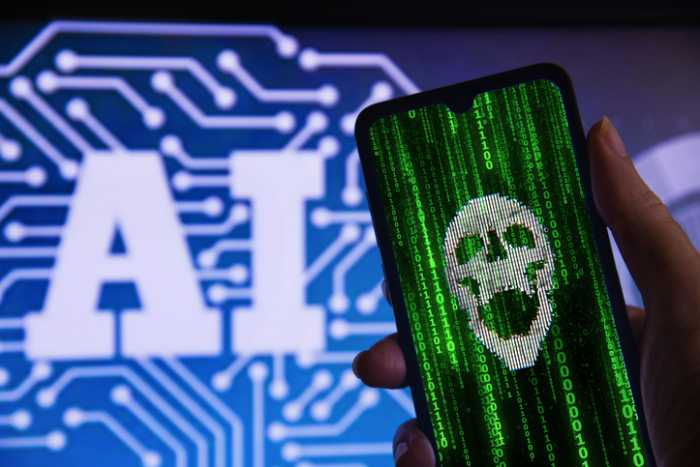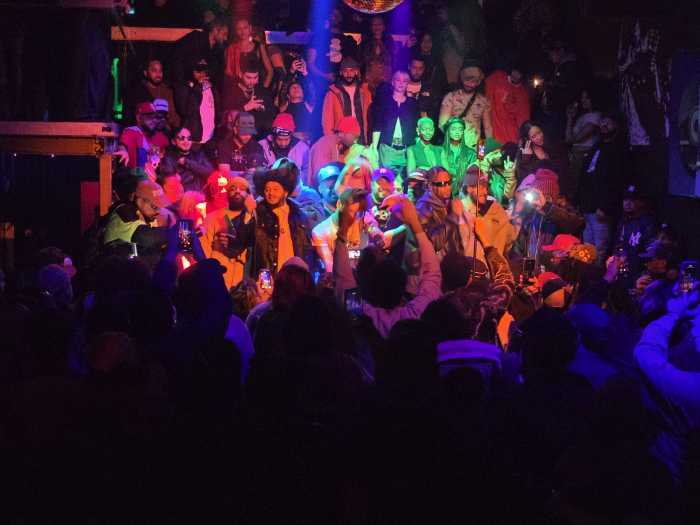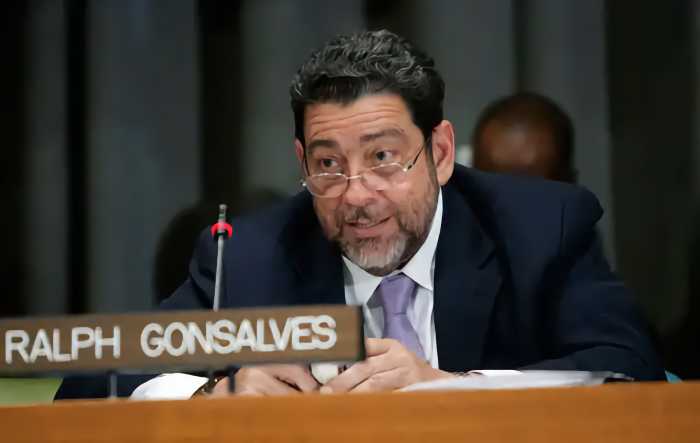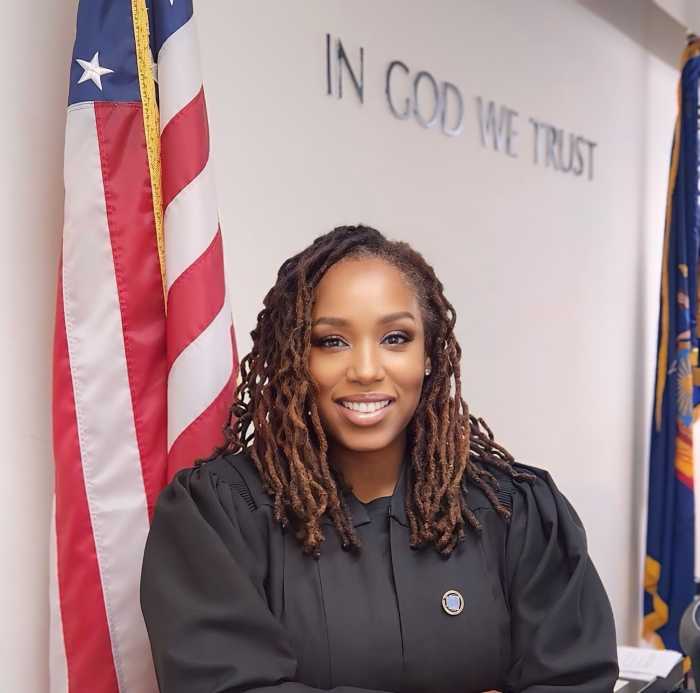The prosecution rested its case Wednesday in the trial of Abel Cedeno, the bullied teen charged in the stabbing death of Matthew McCree and the slashing assault on Ariane LaBoy on September 27, 2017, in their Bronx high school classroom.
Assistant District Attorneys Nancy Borko and Paul A. Andersen presented a blizzard of student witnesses, whose accounts varied slightly — in some instances differing from details they had earlier given police — but most agreed that McCree punched Cedeno prior to the defendant fatally stabbing the dead youth. The final two witnesses, both presented on Wednesday, confronted the prosecution with problems — one contradicting himself on details of the confrontation among the three youths and the other admitting to posting a threat against Cedeno on Facebook when she learned he had “posted bail and was free to walk the streets.”
The defense plans to open on Thursday with testimony from Cedeno, who also testified at length in the grand jury, which reduced his charge to manslaughter from the second-degree murder charge District Attorney Darcel Clark sought.
On Wednesday, defense attorneys Christopher R. Lynn and Robert J. Feldman raised the possibility they might need a brief continuance to locate and subpoena two other student witnesses whose identities they only received from the prosecution on Wednesday. In indicating he was open to a “reasonable” continuance, Judge Michael A. Gross noted the defense’s earlier concerns that the prosecution might be “cherry-picking” witnesses from among the students who witnessed the deadly encounter.
Gross warned the defense that he will be absent on vacation for three weeks after July 19, but Feldman said he was confident they can bring the two witnesses in and stick to the judge’s timetable.
Gross is hearing the case in a bench trial at the Bronx Hall of Justice, where the primary attendees are the families of the victims and of the defendant.
While students’ testimony has varied on several points, their thread line has been that their American history class began with students “having fun” or “fooling around” by throwing paper around at each other, Cedeno getting up and standing at the door angrily calling “pussy” at whoever was throwing things that hit him, McCree getting up to admit it was him and then walking or running around the periphery of the classroom to fight with Cedeno, pushing past one of two teachers present.
Some of the students said they saw Cedeno with a knife in his right hand and McCree charged him anyway. Most acknowledged that McCree punched Cedeno first. Cedeno then used the knife — the defense says to defend himself — and pierced McCree’s chest right to the heart. Dr. Jonathan Hayes, from the city’s medical examiner’s office, testified the cut was two to two-and-a-half inches deep, left a five-inch gash in the chest, “and caused the lung to collapse,” as well. Defense counsel Christopher R. Lynn asked him about wounds on McCree’s hands from punching Cedeno, but he did not have the photos and only remembered one “abrasion.” Hayes did not conduct the autopsy himself.
LaBoy, according to the testimony, moved from the back of the room to aid his friend McCree, who fell from the wound, and he pummeled Cedeno, getting slashed multiple times himself.
Judge Gross has consistently sustained all objections to defense questions about the disciplinary records of the victims and the knowledge student and teacher witnesses have of their gang membership. No witness has testified that the victims displayed weapons, but it is the defense contention that Cedeno feared these boys in particular because of their reputations for violence, including delivering a beating to his friend.
On Monday, student witness Tyler Lilavois, said Cedeno used fighting words when confronting the class by saying, “What’s up!” Others have said that he said, “Pull up!” Cedeno has said in interviews that it was McCree who stood up and used fighting words. Alex Vasquez, another student, said that McCree said, “I’m sorry” before going all the way to the front of the room to fight Cedeno.
In describing the fatal confrontation, Lilavois — like LaBoy and a previous female witness — put his head down and wept, leading Gross to grant a short recess before continuing. The students produced by the prosecution are showing the traumatic effects of witnessing the fatal fight.
On Tuesday, Vasquez acknowledged that another knife recovered from the crime scene was his, but defense attempts to clarify that many students carry knives for protection in the school were rebuffed.
Some of the student accounts are at variance with what police reports in the wake of the incident recorded that they said. While those statements have been provided to the judge, they are considered hearsay.
The dean of the Urban Assembly School for Wildlife Conservation, Matthew Lawlor, testified about dealing with the aftermath of the fight. An ex-Marine, he said he heard screams, “saw blood rolling out of the classroom,” saw aides trying to “push down” on McCree’s wound to contain it, and tried to attend to LaBoy, stop his bleeding, and get him to “come to.” Lawlor said he saw McCree “take his last breath” and said to himself, “I can’t lose another.”
While most defense questions about bullying in the chaotic school were overruled by Gross, Lawlor did say that bullying “depends on what’s going on,” noting that it can vary from “cursing to teasing to physical violence.” He said he did not recall Cedeno being called “a faggot” in school and an earlier ID picture of Cedeno with long tresses that got him mercilessly bullied, according to the defense, was not admitted into evidence.
On Tuesday, student witness Dayshawn Johnson, now 18, said that a previous student witness, Frankie Santiago, “tried to stop the fight.” A nine-second video of the confrontation, which has been shown repeatedly in the classroom, shows Santiago being rebuffed by McCree. Asked for details of the confrontation, she said, “All I recall is that it was a fight.”
On Wednesday, 19-year-old Angel Rivera, who said he had known McCree and LaBoy for several years but did not know Cedeno, said that when McCree and LaBoy starting tossing wadded up paper from the back of the room, “they were just playing around and being kids. I know because we always played that way.” He described Cedeno angrily getting up, calling whoever was throwing the paper “pussies,” and leaving the classroom for several minutes and then returning and saying, “What’s popping?” Rivera said that meant he wanted to fight.
Crucially, Rivera said Cedeno moved to the center of the front of the room where the confrontations with McCree and then LaBoy took place. However, he had McCree falling to the floor near the classroom door and LaBoy getting aid in roughly the same spot. In questioning by Lynn, Rivera answered “yes” when asked whether the fights had not in fact taken place near the door where Cedeno had entered. The prosecution, on re-direct questioning, got Rivera to again say the fights took place in the front center of the room, but the value of his testimony painting Cedeno as an aggressor in the situation seemed clearly compromised.
Rivera also contradicted other student witnesses by saying that McCree did not shove Nikolai Kennedy, the teacher he passed as he approached Cedeno, out of the way.
J’leene Ortiz, the final witness for the prosecution, was out of the room when the fighting began but said that as she was returning she heard screaming and saw LaBoy and Cedeno fighting. She said she did not see a knife in Cedeno’s hand but could tell he was holding something. In her account, Laboy, after being stabbed, staggered in the opposite direction from the door toward the teacher’s desk, where she tried to comfort him.
While Ortiz — who had one point broke down in tears and was allowed a brief recess — testified, Cedeno passed his attorneys a note saying he had a screen shot of a Facebook post by her that Lynn characterized as a threat on his life. After some argumentation over the image’s admissibility, Gross allowed Lynn to question Ortiz about it.
The post read, “Juss got the drop that this n—- Abel was seen walkin on 182nd THERES NO WAY THIS N—- IS WALKING THAT COMFORTABLE ND NOT GETTING TOUCED SMH n—– needa step up they game up 100 and pay attention ! tell him walk on my side”
Confronted with the post, Ortiz quickly acknowledged it was hers but said, “I was angry. I just lost my friend. I was a witness to a murder.” In her testimony, she had said she was out of the room when McCree was stabbed.
Asked when it was that she wrote the post, Ortiz said, “Must have been the time that he posted bail and was free to walk the streets.”
Asked whether at that time she wanted Cedeno “dead or hurt,” Ortiz responded, “Yes.”
It will be up to Judge Gross to decide if Cedeno was justified in defending himself or if he was the aggressor. Cedeno has said in interviews that he feared he would be killed had he not struck back.


















